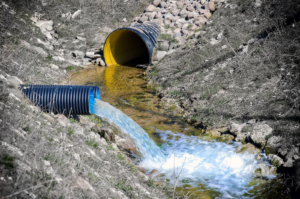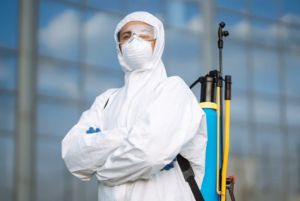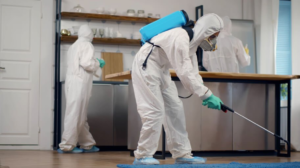AC Repair Round Rock is vital to ensure your system runs properly on those blistering summer days. These repairs can also help keep your warranty intact and avoid expensive future repairs.
A damaged fan motor will prevent the air from being pushed over the evaporator coil, which decreases energy efficiency. In order to fix this problem, a technician will inspect the fan and may need to replace it.
1. Frequent Maintenance

Getting your AC system professionally checked and repaired as soon as you notice issues is one of the best ways to avoid costly breakdowns and extend your unit’s lifespan. Air conditioning maintenance appointments typically involve inspecting and cleaning air filters, adjusting blower components, checking electrical connections, verifying refrigerant levels, and cleaning drain lines and pans. This helps the system run smoothly, saving energy costs, reducing indoor humidity levels, and extending the unit’s life.
Inefficient AC systems consume a lot more energy to cool your home, driving up your monthly power bills significantly. This inefficiency is caused by dirty coils, low refrigerant levels, worn-out parts, and other problems. Regular air conditioner maintenance eliminates these issues and keeps the system running efficiently.
AC maintenance also ensures the health and comfort of your family. Clean air filters help remove dust, dirt, pet dander, and other allergens from the air. In addition, routine maintenance reduces the amount of humidity in your home. High humidity creates a musty and unpleasant smell, as well as increases the chances of mold or mildew.
Timely ac repair helps prevent these issues and improves the air quality in your home, allowing you to breathe easier all summer long.
A lack of regular maintenance often causes minor AC problems to exacerbate, resulting in more expensive repair costs or even system failure. These problems usually make themselves apparent on the hottest, most humid days of the season, when you need your air conditioning the most. Air conditioning maintenance appointments identify and address these issues, preventing them from escalating into serious AC problems.
2. Squealing Noises
Although modern AC units are designed to run silently, they can sometimes produce a variety of noises when something is wrong. Whether these strange sounds are minor annoyances or alarming warning signs, understanding them can help you determine when to call in a professional.
Squealing noises often indicate problems with your air conditioner’s blower wheel, fan motor or belt. While some squealing noises can be fixed with DIY methods, such as cleaning or replacing dirty filters or tightening loose screws, others require the attention of a trained technician to resolve.
The most common cause of squealing noises is an airflow obstruction. When the fan blades hit an obstruction inside the unit, they can create a high-pitched squeal that can be heard both inside and outside of your home. This is usually a simple fix, but it can be difficult to identify without the help of a professional.
A squeal that only occurs when the AC system turns on can indicate dangerously high levels of pressure within your compressor unit. This issue can lead to a number of issues, including a complete breakdown of the unit and may be caused by air bubbles or a clogged drain line. This is an urgent issue that requires immediate attention from a professional to prevent further damage and costly repair bills.
Gurgling noises typically indicate refrigerant flow or drainage issues. They can be caused by air bubbles in the refrigerant lines or a clogged condensate drain line, which will need to be cleared as soon as possible to avoid further complications with your AC system. This is another problem that should only be addressed by a licensed professional, as tampering with your AC may void its warranty and cause more damage to the unit.
3. High Energy Bills
Inexplicably high energy bills can be a sign that your AC unit is in need of repair. You may need to change the air filter, or you might have a refrigerant leak. Often, though, this issue stems from lack of regular maintenance. Dirty condenser coils and air filters force the system to work harder to achieve cooling temperatures, leading to higher energy usage. By scheduling routine AC tune-ups, you can keep your electricity costs in check and prevent any costly breakdowns.
Another common cause of high energy bills is improper thermostat calibration. An incorrectly calibrated thermostat can lead to temperature inconsistencies throughout the home and force your AC to work harder to help manage these temperatures. AC repair professionals can properly calibrate the thermostat, preventing this wasteful energy consumption.
Other reasons for high energy bills include clogged air ducts and airflow issues. A professional can remove the registers and cold air returns, clean them, and inspect for any obstructions or leaks. In many cases, a simple solution such as sealing small duct leaks can significantly reduce energy costs and improve indoor air quality.
One of the most important factors to consider when deciding whether to pursue ac repair or replace your system is the operating cost vs. An aging unit will consume more energy than a new, efficient model. Discussing this issue with a qualified technician will help you determine which option is best for your household.
Taking some time to understand your AC system and troubleshooting problems on your own can make a significant impact on your energy bill, especially in the summer. However, if you’re experiencing issues that cannot be resolved by a quick fix or don’t feel comfortable handling on your own, it’s always best to call in an expert.
4. Poor Airflow
We all like to take pride in being able to fix things around the house, whether it’s a clogged sink or a broken window latch. However, some problems should not be attempted on your own such as a faulty AC system. If you put your hand in front of the air vent and feel only a trickle of cool air blowing, it is time for an air conditioning repair technician to visit your home.
One of the most common reasons for a drop in airflow is a dirty or clogged filter. The air filter is an essential part of the AC unit, and changing it regularly ensures that the AC system can work properly. In addition, a clean filter can help prevent issues with your indoor fan and compressor.
Other causes of poor airflow include a faulty blower or internal AC components. The blower is the component that pushes the cold air through your ductwork and into your home, and it is important to have this part working correctly to get the best results from your system. If you have a bad blower, it can cause hot and cold spots in your home, as well as pressure imbalances that may lead to compressor failure or other AC repairs.
Additionally, your ductwork can develop holes or gaps over time that can negatively impact the amount of air that is delivered to different parts of your home. This is another reason to schedule an AC repair as soon as possible, because sealing leaking ducts keeps your home comfortable and safe. It also helps to improve the overall efficiency of your system. This can save you money on energy bills and keep your air conditioner running for longer periods of time.
5. Worn Out Parts
During normal operation, dozens of components work together to bring you cool air. The thermostat reads indoor temperatures and tells the system when to power on and off, while internal coils move refrigerant, absorbing heat from the air to leave only cold air. Over time, mechanical wear and tear can affect these components, leading to problems like a fan that won’t switch off or a clogged condensate drain.
When these issues are left unchecked, they can lead to even more serious problems. In the case of a clogged condensate drainage line, for example, water can leak into the unit or home, causing structural damage and mold. Luckily, many of these problems can be prevented with regular maintenance and cleaning of the interior and exterior units.
Other mechanical problems can occur as a result of electrical failures or overloading. Over time, a capacitor or contactor can fail due to frequent starts and power surges. These can happen more frequently in Florida’s humid weather, causing the internal contacts to corrode or fuse. Signs of contactor failure include clicking sounds and a system that won’t start.
An AC inspection and tune-up can catch most mechanical problems before they cause serious damage. However, some issues will require professional attention. For instance, if the thermostat is faulty or fails to turn on or off at all, it’s likely time for a repair or replacement. A professional will inspect the thermostat and check for any loose or broken parts to ensure that it is functioning properly. They will also make sure that all electrical connections are secure and in good condition. They can also recommend an appropriate maintenance schedule to keep the unit in good working order.








